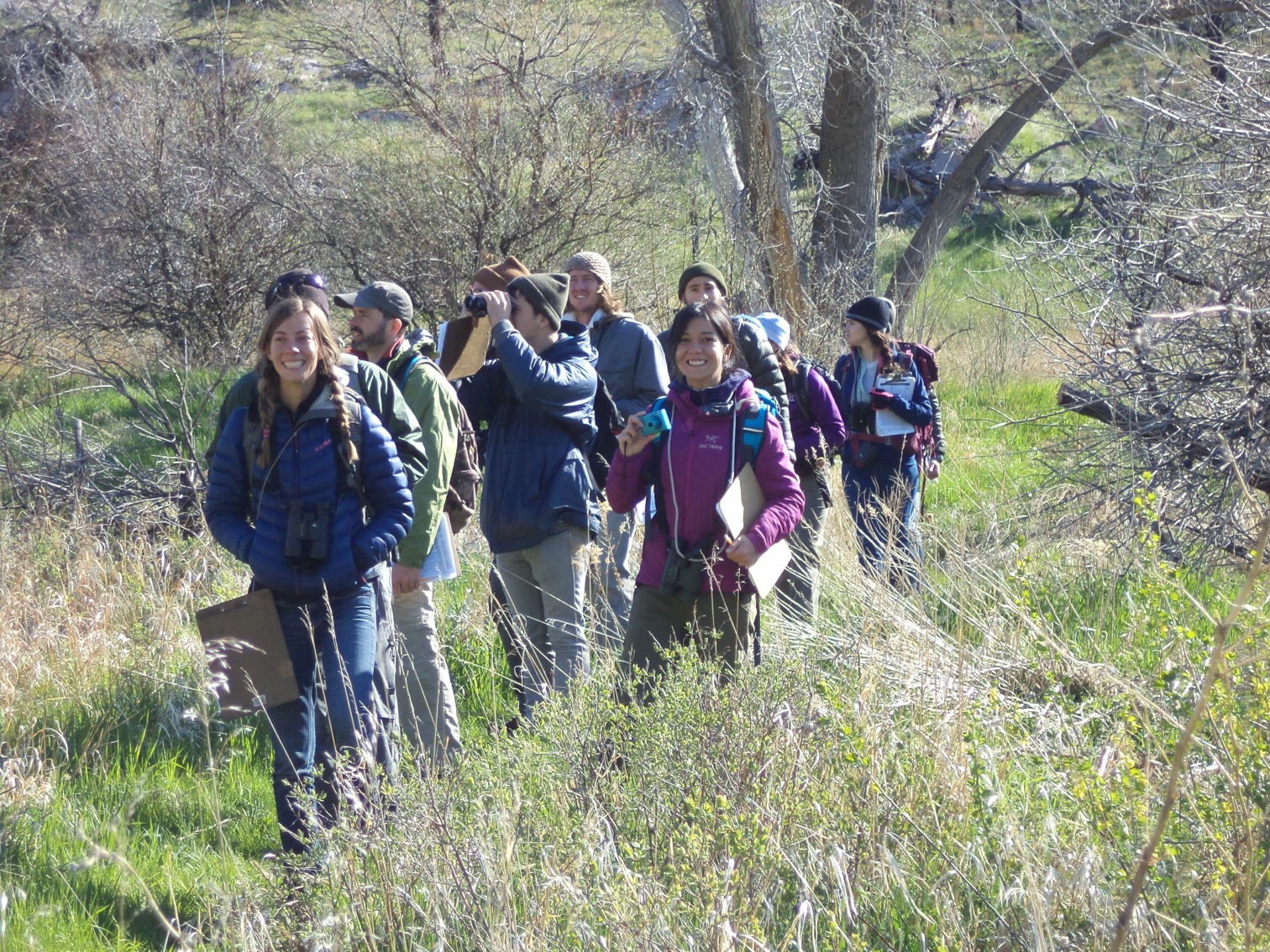With summer waning, Rocky Mountain Bird Observatory has completed its sixth season of conducting surveys under the Integrated Monitoring in Bird Conservation Regions (IMBCR) program. The IMBCR program represents one of the largest breeding bird monitoring programs in North America, stretching from Arizona’s deserts to Montana’s mountain peaks.

American Three-toed Woodpecker by Bill Schmoker
This summer, surveyors detected several new and rare species for the IMBCR program, including an American Three-toed Woodpecker in the Pine Ridge of Nebraska, only the second time this species has been seen in the state! Other novel species this year included a Hepatic Tanager in Colorado, a Mexican Whip-poor-will in Arizona and RMBO’s first record of a Dickcissel in Wyoming during IMBCR surveys.
It’s always exciting to see new or rare birds, but the long-term goal of the IMBCR program is to assess population trends over time. This way, RMBO and partners can help land managers identify species that are at risk or declining. In the end, we’re all striving to increase populations of species of conservation concern while keeping common birds common.
A Look at the Numbers
In 2014, under the IMBCR program, 59 technicians working for five partner organizations fanned out across 12 western states to survey birds in habitats ranging from deserts to tundra. A total of 216,000 individual birds of more than 350 different species were detected. Since the inception of the program, nearly 1.2 million individual birds have been detected during IMBCR surveys!

Technicians from RMBO, the Avian Science Center and Wyoming Natural Diversity Database get prepped and trained for the season at The Nature Conservancy’s Whitney Preserve in South Dakota.

Stream crossings can be a harrowing obstacle when hiking to survey locations, for technicians and dogs alike.

One of the frequent hazards in the field … log truks

Technician Jenna Boisvert surveys for birds at nearly 12,500 feet in the Wind River Range of Wyoming. Birds spotted at this elevation included American Pipit, Black Rosy-Finch and White-crowned Sparrow.
Conducting surveys under a large monitoring program like IMBCR has multiple benefits. Producing a single (and very large) report for all these surveys, storing all of these data in the same place, and hiring and training crews to conduct surveys using the same methodology save time and money. Additionally, since the data are all collected and analyzed together, the IMBCR program can produce more precise estimates than a smaller program (like that for an individual national forest) could. Because of its efficiency and effectiveness, the IMBCR program was named the Joint Conservation Project of the Year by the U.S. Forest Service and Bureau of Land Management in March of 2013.
IMBCR data are made available to land managers, conservationists, researchers and others through the Rocky Mountain Avian Data Center. The database is available to anyone. Check it out for yourself and discover where we’ve been surveying, what birds we’ve seen at locations near you, where we’ve seen a particular species you might be interested in, and population estimates for some of your favorite birds.
We Couldn’t Do It Without You
Thank you to the many partners who make the IMBCR program possible. Funding is provided by the U.S. Forest Service, Bureau of Land Management, Colorado Parks and Wildlife, Wyoming Game and Fish Department, Montana Fish, Wildlife and Parks, Great Plains Landscape Conservation Cooperative, Northern Great Plains Joint Venture, Great Northern Landscape Conservation Cooperative, U.S. Fish & Wildlife Service: National Wildlife Refuge System, Colorado State Land Board, Intermountain West Joint Venture and the National Park Service. In addition, the Avian Science Center, Wyoming Natural Diversity Database, Intermountain Bird Observatory and USFWS assisted with hiring, training and managing all of the avian technicians who collect IMBCR data.

Technicians training in South Dakota gather for a photo.
If counting birds for a living sounds appealing to you, please check out RMBO’s jobs board starting in January to see what positions are available and how you can apply.
~ Nick Van Lanen, Biologist


